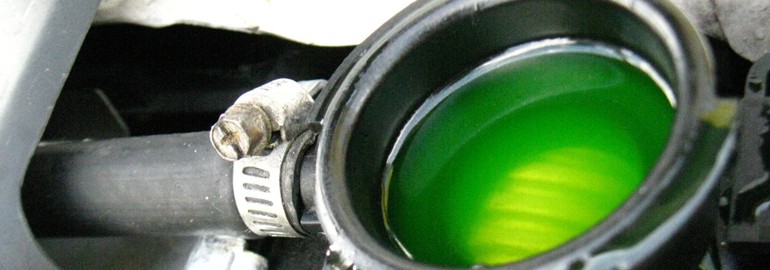COOLING SYSTEM
RADIATOR – COOLANT – THERMOSTAT – ANTIFREEZE
Your car’s cooling system is made up of several important parts that all have to perform properly to keep your car from running hot or overheating. Here’s a quick overview of each of the components of the cooling system.
RADIATOR:
The radiator is what actually performs the cooling. As the coolant or antifreeze runs through your engine, it absorbs the heat that is created by the engine. When the coolant moves to the radiator, the cooling fans move air across the radiator to remove the heat from the coolant.
WATER PUMP:
The water pump is mounted on the front of the engine. Typically belt driven, the water pump circulates the coolant or antifreeze throughout the cooling system.
THERMOSTAT:
The thermostat opens and closes to control the rate of flow of the coolant. Its primary function is to be sure that the coolant circulates properly and doesn’t overheat. A failing thermostat can stick closed – restricting the flow of coolant. A thermostat can also fail when it sticks closed. That means the coolant never stops flowing. When that happens, the coolant doesn’t stay in the radiator long enough to cool down.
PRESSURE CAP:
Your car’s cooling system operates under pressure. That pressure means the coolant can withstand higher temperatures before boiling. Depending on your vehicle, the pressure cap can be located on the radiator itself, or on newer vehicles, the pressure cap is located on the overflow or reserve tank.
RESERVE TANK:
Also called the expansion tank or overflow tank, the reserve tank stores excess coolant as it expands with heat. On today’s vehicles, it’s common to see antifreeze or coolant in this reserve thank. It typically will be marked with ‘FULL’ and ‘ADD’ marks to give you an indication of the proper coolant level.
HEATER CORE:
Yes, the same coolant that keeps your engine cool is used to heat the passenger compartment. The heat really works like the radiator – in reverse. In the case of the radiator, you want to get rid of the excess heat from the coolant. On the other hand, the heater is used to remove the heat and use it to warm up the passenger compartment of the car.
TRANSMISISON COOLER:
If your car is equipped with an automatic transmission, the transmission fluid is passed through a transmission cooler that’s located in the radiator. The purpose of the transmission cooler is to remove excess heat from the transmission fluid.
HOSES:
The radiator always have an upper and lower radiator hose. Likewise, the heater is connected to the engine and coolant through hoses. In some applications, a ‘by-pass’ hose may be used to maintain a coolant flow around the thermostat when required.
Other visitors wanted to…
Book An AppointmentGet CouponsFind Us Fast Ask A MechanicSee Our Auto ServicesRead Customer Reviews



